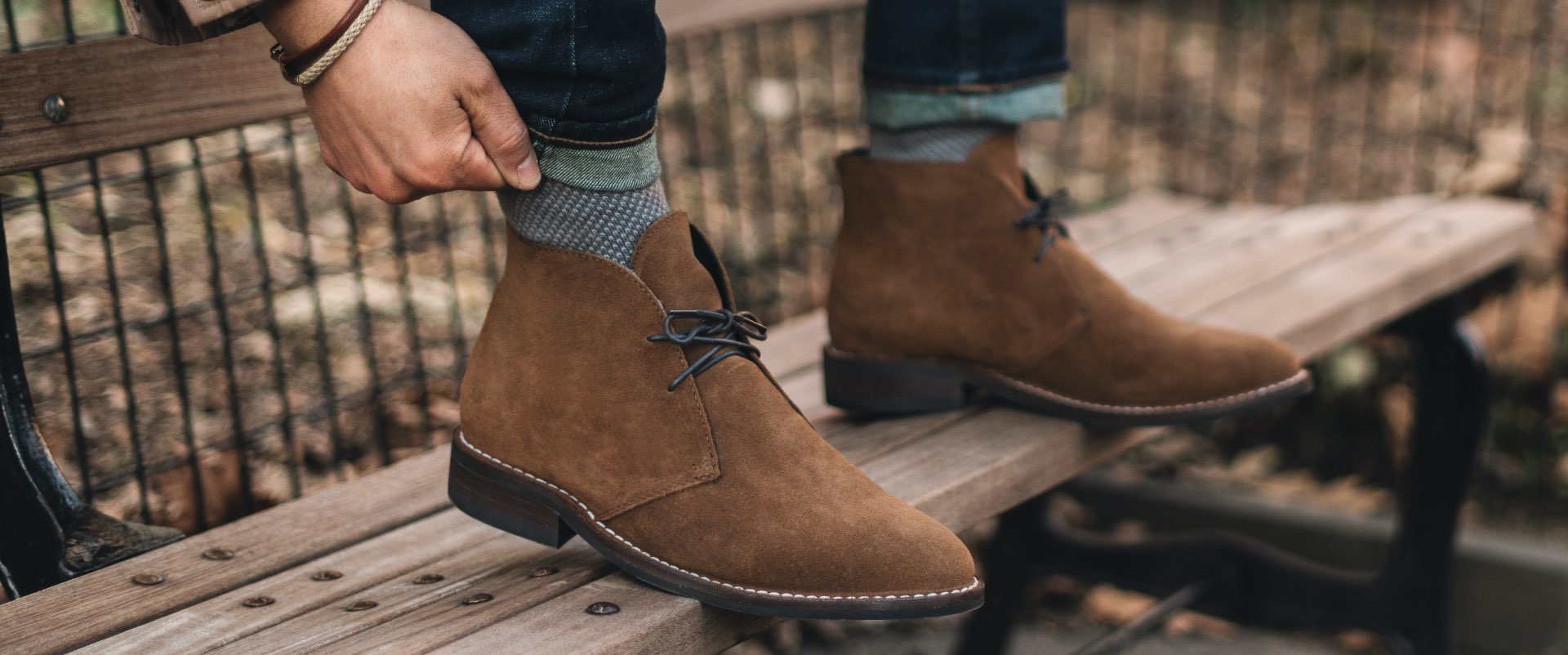
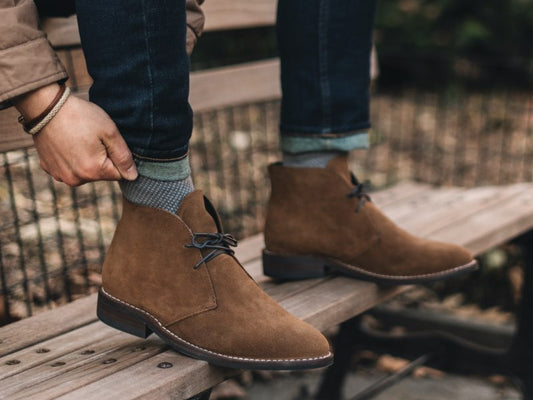
World's Best Boots: The Chukka Boot
When the time comes for warmer weather or casual elegance, there’s one purpose-built boot style that rises above all others. The chukka boot or desert boot - often used interchangeably, although they aren’t quite the same - is perfectly suited for the transitional months where you need to balance function with style.
History
The origin story of the chukka boot is shrouded in equal parts of history and mystery.
A common, but unlikely assertion is that chukka boots were originally developed for riding horses. The name chukka comes from the sport of polo, where the matches are split into segments of play called “chukkas.” However, you’d be hard pressed to see these on a polo field where thigh-high equestrian boots still dominate and chukka boots don’t offer much protection for your calves. Whatever the logic, the name stuck to describe all boots with a short shaft and a few eyelets.
However, the clearest design story harks back to the British military during World War II. For UK forces stationed in North Africa, regulation army boots were excellent for handling the rigors of combat, but weren’t ideal for the hot, sandy desert environment. As the legend goes, soldiers went shopping in the local bazaars to find low-cut boots in lightweight leathers with thick crepe soles. These ‘desert boots’ were better suited for keeping feet dry and sand out, becoming a special favorite for comfortable off-duty wear, before eventually catching on with civilians after war’s end.
In the 21st century, chukka boots cover a wide spectrum of different styles, ranging from the casual purpose of the original desert boot to polished dress chukkas more at home with a suit.
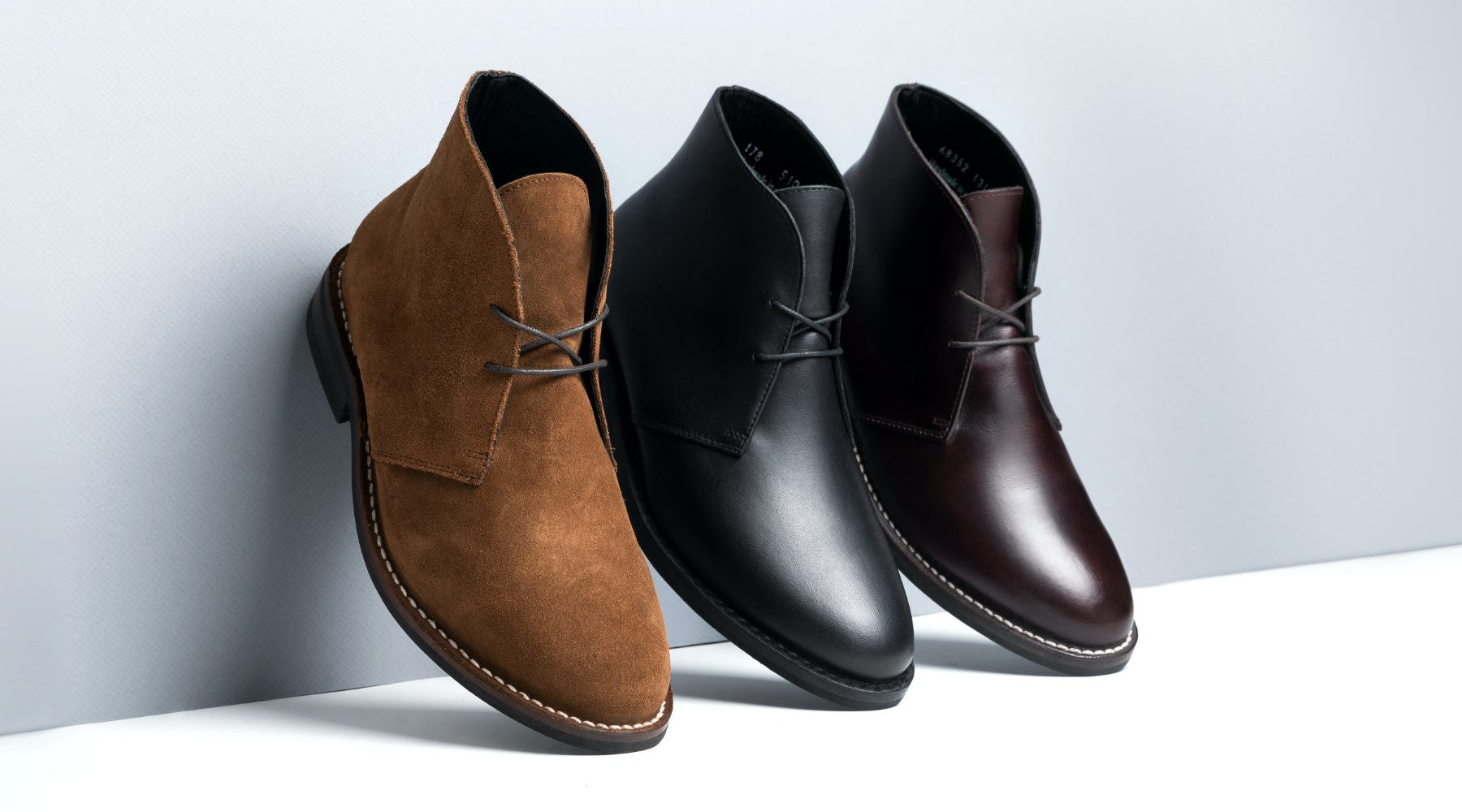
Design Details
The key to a quality chukka boot lies in the extreme simplicity of its design. Specifically, chukka boots usually feature a few large leather panels, 2-3 rows of eyelets, and a short shaft that stops just above the ankle. This minimalist pattern maximizes for comfort in warm weather and creates a boot that shares more in common with a casual shoe.
Within the chukka boot category, the desert boot is the most informal option. Desert boots are further distinguished by the use of lightweight suede uppers (which are lighter and more breathable) and a natural rubber or crepe bottom (originally used for grip and to deflect hot surfaces). Modern variants of this bring in new comfort technologies to further improve the fit and feel of this summertime classic.
On the more formal side, you’ll see dress chukkas that take their cues from fine European dress shoes. While construction varies, the highest quality chukka boots usually feature a Goodyear Welt Construction or Stitchout construction that makes them resoleable. Outsoles tend to be made from leather or low-profile rubber and you’ll also see fine leathers that polish up nicely, inline with most dress shoes.
How to Wear Chukka Boots for Men
For a classic casual look, it’s hard to beat a suede chukka that pairs equally well with jeans or khakis. The Dark Olive Suede Scout may just pair with every pair of pants you already own.
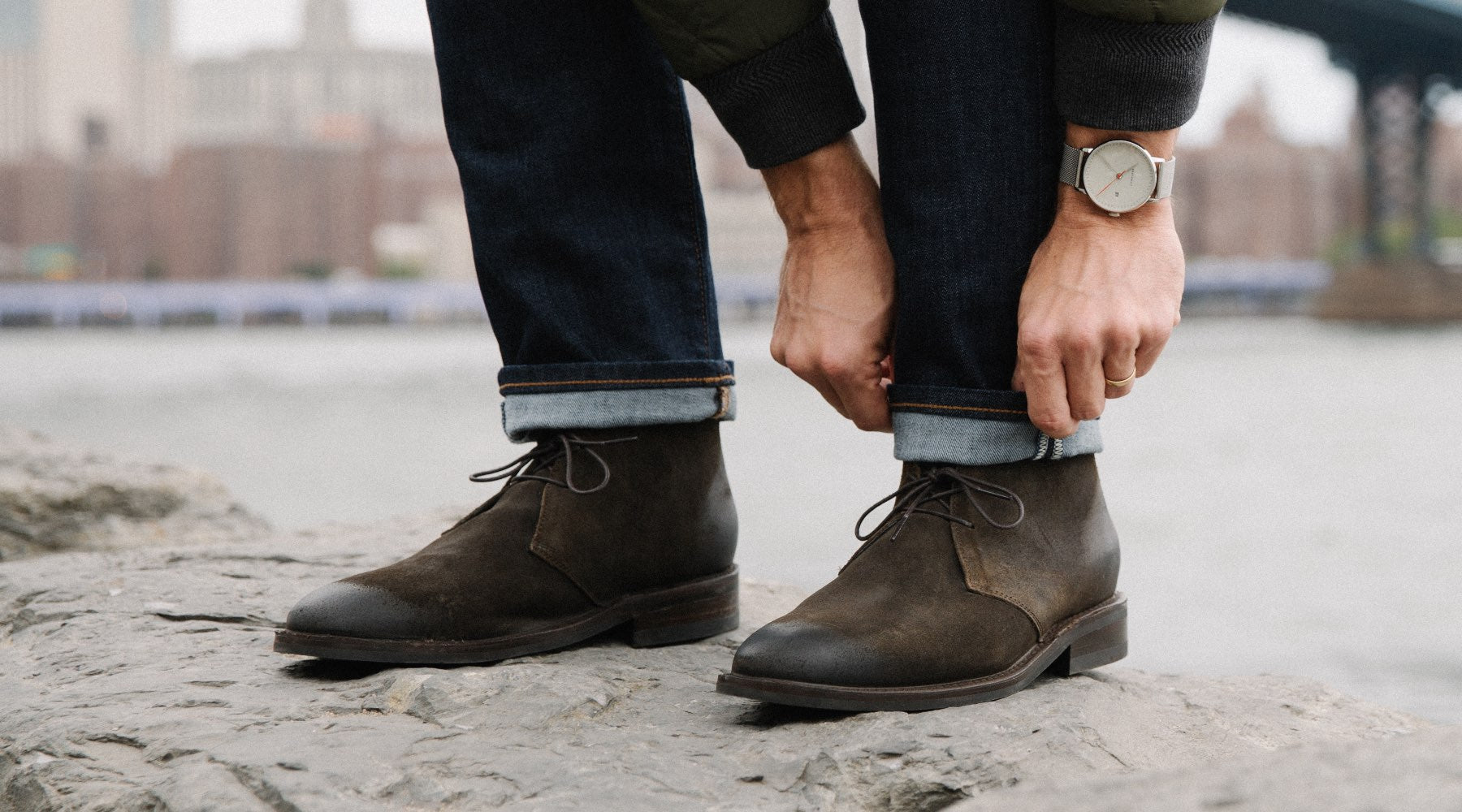
For a more formal look, you want to prioritize chukkas with high-shine leathers. The Brown Scouts bring some casual elegance to any suit and can still be worn year round.
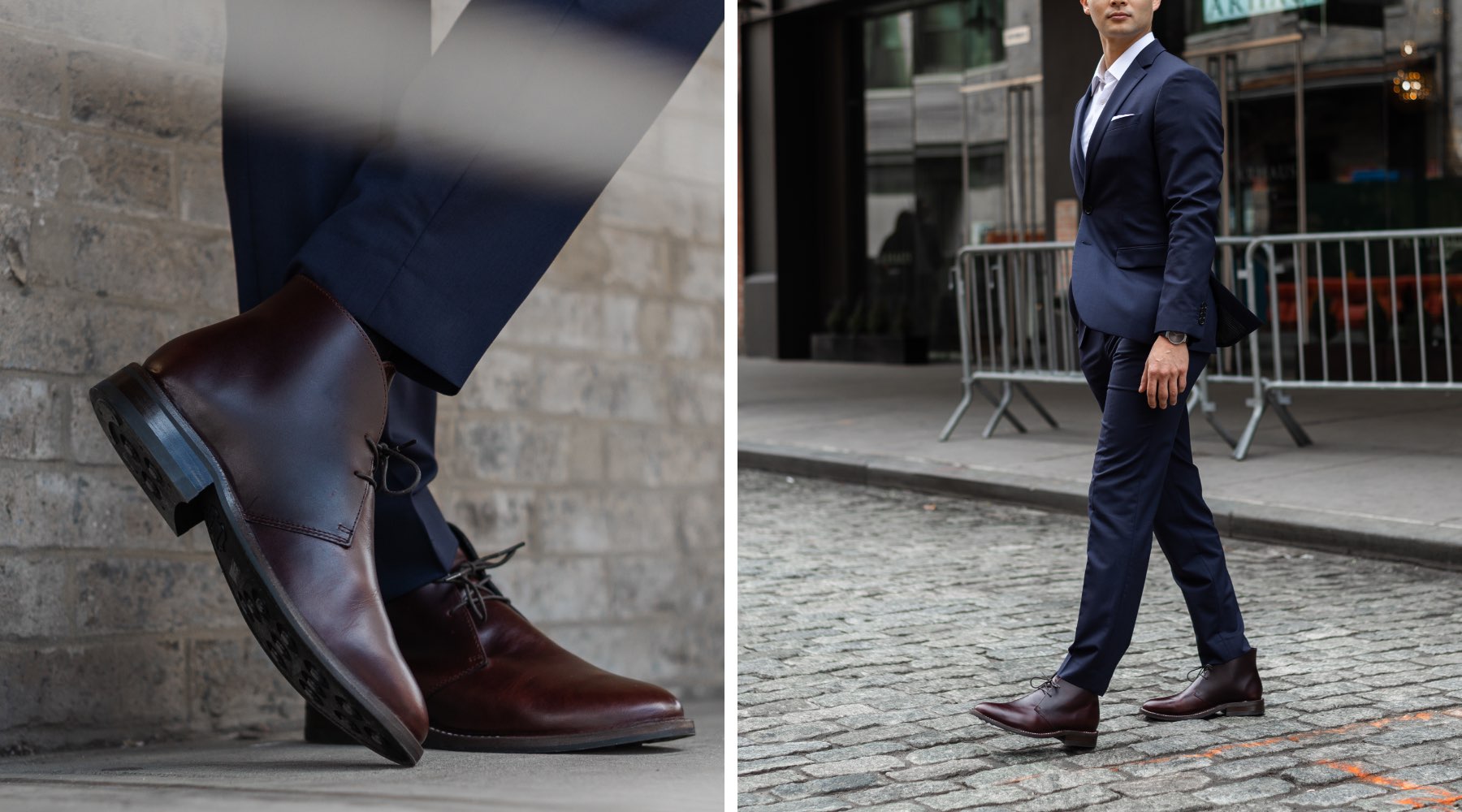
If you prioritize comfort above all else, look at chukkas with cushy outsoles made of natural rubber. The Safari Scout takes elements of desert boots and work boots to create an effortless complement to a pair of dark jeans.
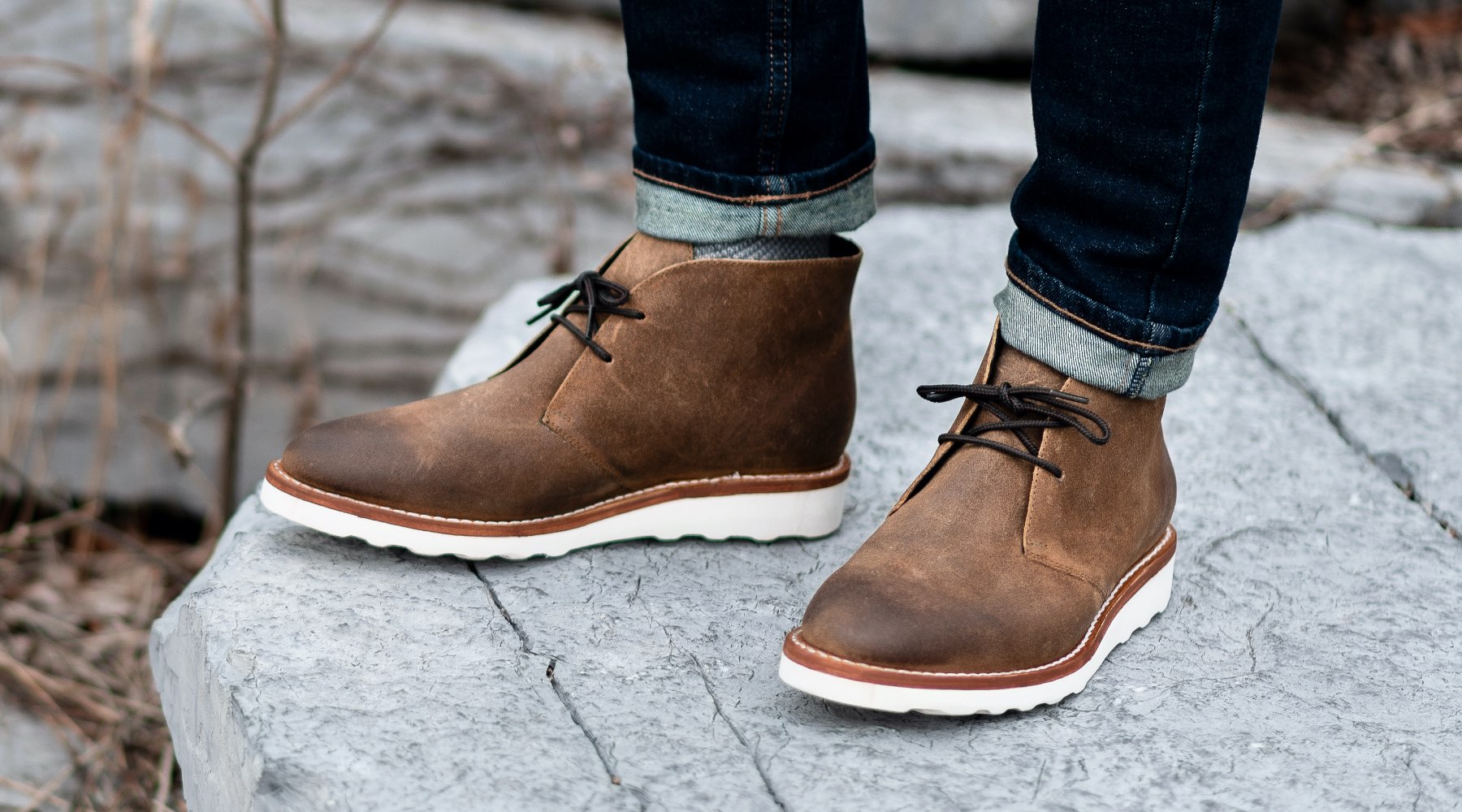
The Best All-Around Chukka Boot: The Cognac Suede Scout

Key Features: Cognac Suede WeatherSafe™ Suede, Poron® Antimicrobial Shock Absorbing Insole, Stitchout Construction
Why we love it: This model covers all the bases. The clean design and solid construction elevates it over a desert boot, while the oiled Weathersafe suede bring texture and warmth to any outfit. This is a chukka that lives up to long day demands, year round.
What others say: “The Most Versatile Spring (and Summer) Boot” - Esquire
Also available in: Brown, Dark Olive Suede, Midnight Suede, and Black.
Shop NowThe Classic Transitional Boot
Some of the greatest designs originate from the simplest needs and chukka boots are an excellent example of form following function. Though chukkas come in a much greater variety than the humble desert boot, they still remain the default style for many boot lovers around the world.

